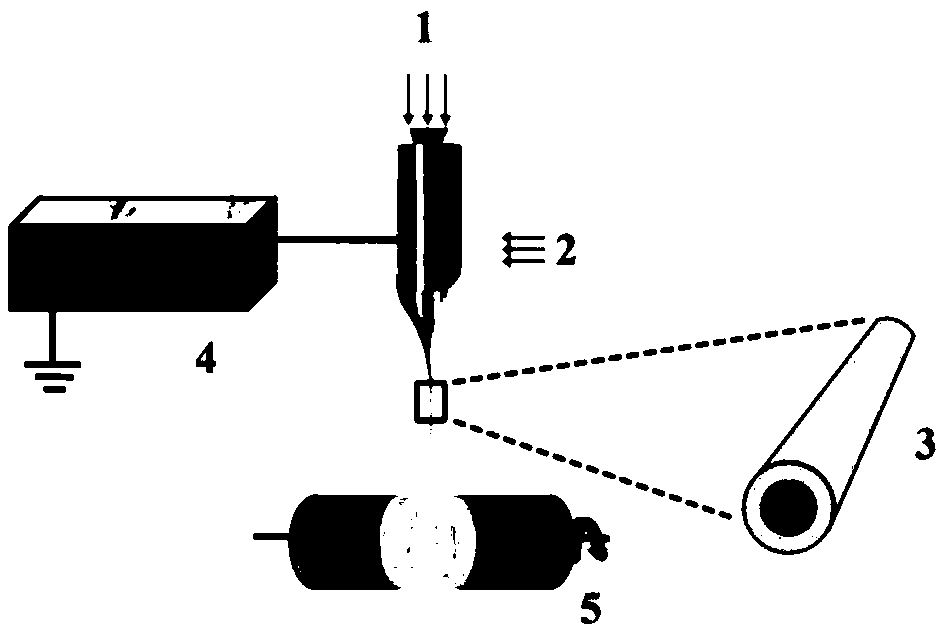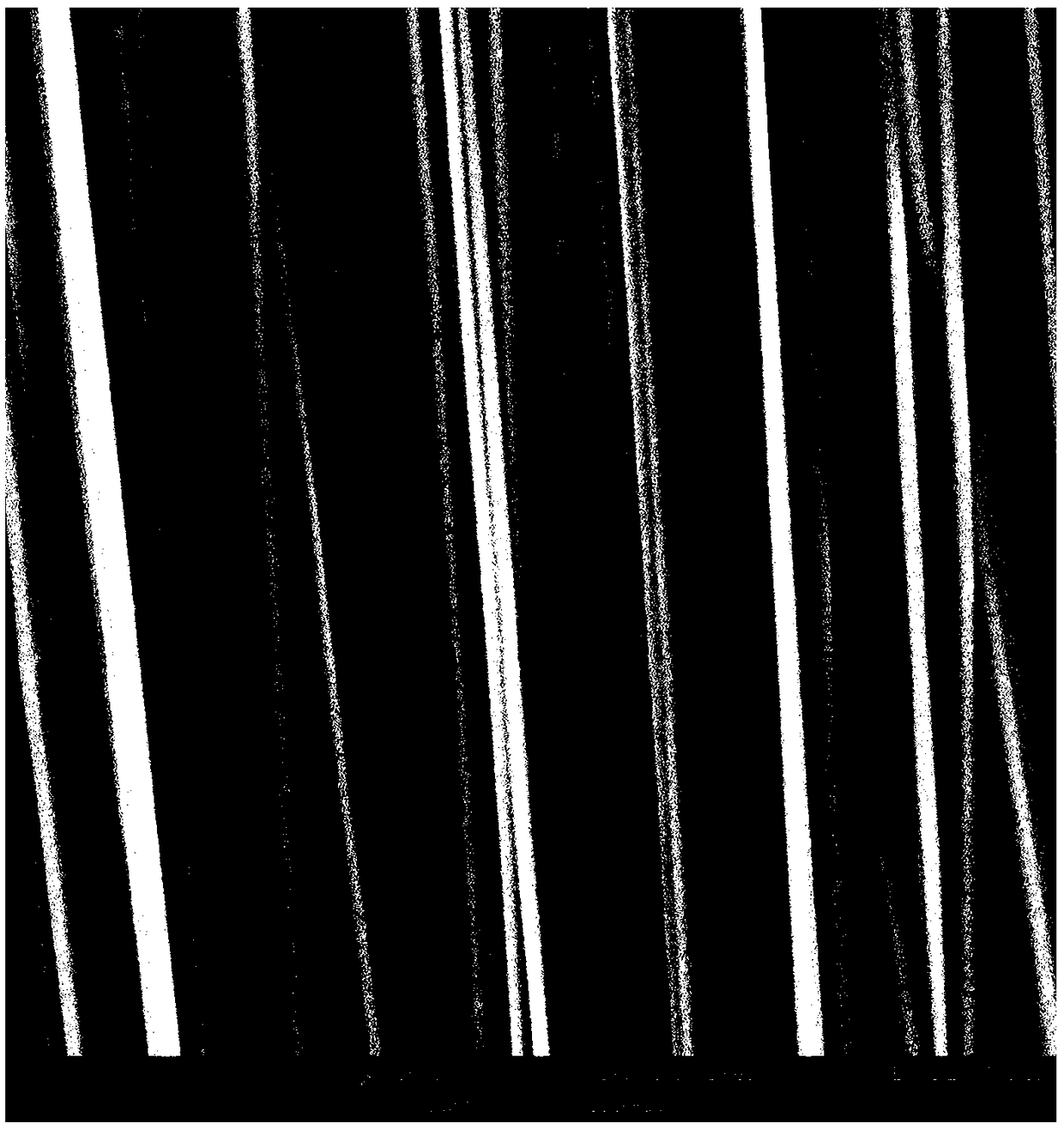Method for preparing micro-nano oriented fiber with controllable rigidity
A micro-nano, oriented technology, applied in fiber processing, conjugated synthetic polymer rayon, filament/thread forming, etc., can solve problems such as chemical composition changes, and achieve the effect of expanding scope and low cost
- Summary
- Abstract
- Description
- Claims
- Application Information
AI Technical Summary
Problems solved by technology
Method used
Image
Examples
Embodiment 1
[0048] (1) At room temperature, 0.684g PLCL (the copolymerization ratio of lactic acid and caprolactone is 50:50, the viscosity is 2.5dl / g, purchased from Jinan Daigang Biomaterials Co., Ltd.), 0.036g ultra-high molecular weight PEO ( Molecular weight>5.0×10 6 Da (purchased from Alfa Aesar, UK) was dissolved in 6mL of hexafluoroisopropanol (purchased from Shanghai Darui Fine Chemicals Co., Ltd.), and stirred for 12 hours to obtain PLCL- PEO shell solution.
[0049] (2) 0.57g PLLA (molecular weight of polylactic acid is 100,000Da, purchased from Jinan Daigang Biomaterials Co., Ltd.), 0.03g ultra-high molecular weight PEO (molecular weight>5.0×10 6 Da (purchased from Alfa Aesar, UK) was dissolved in 6 mL of hexafluoroisopropanol (purchased from Shanghai Darui Fine Chemicals Co., Ltd.), and stirred for 12 hours to obtain PLLA- PEO core solution.
[0050] (3) The shell solution and the core solution prepared above are respectively placed in separate syringes, such as figure 1...
Embodiment 2
[0057] The injection rate of PLCL shell solution was 0.35mL / h and the injection rate of PLLA core solution was 0.15mL / h during stable jet coaxial electrospinning, and the rest were the same as in Example 1 to obtain PLCL / PLLA micro-nano-scale oriented fibers.
[0058] Figure 5 It shows that the PLCL / PLLA micro-nano-scale oriented fiber has a highly oriented structure, and the fiber diameter is 1.40±0.16 μm, which is not significantly different from the fiber diameter obtained in Example 1, that is, the fiber diameter does not change significantly after the shell-core structure is adjusted. .
[0059] Image 6 It shows that PLCL / PLLA micro-nano-scale oriented fiber has obvious shell-core structure, and the chemical composition of the fiber surface does not change, which is still PLCL. The thickness of PLCL shell layer is measured to be 0.35±0.06 μm.
[0060] Figure 11 It shows that the fiber obtained in this example has a higher degree of orientation, and the degree of ori...
Embodiment 3
[0064] The injection rate of PLCL shell solution was 0.2mL / h, and the injection rate of PLLA core solution was 0.3mL / h during steady-jet coaxial electrospinning. The rest were the same as in Example 1 to obtain PLCL / PLLA micro-nano-scale oriented fibers.
[0065] Figure 7 It shows that the PLCL / PLLA micro-nano-scale oriented fiber has a highly oriented structure, and the fiber diameter is 1.34±0.20 μm, which is not significantly different from the fiber diameter obtained in Example 1-2, that is, the fiber diameter does not significantly change after the shell-core structure is adjusted. Sexual changes.
[0066] Figure 8 It shows that PLCL / PLLA micro-nano-scale oriented fiber has obvious shell-core structure, and the chemical composition of the fiber surface does not change, which is still PLCL. The thickness of PLCL shell layer is measured to be 0.16±0.02μm.
[0067] Figure 11 It shows that the fiber obtained in this example has a higher degree of orientation, and the de...
PUM
| Property | Measurement | Unit |
|---|---|---|
| Diameter | aaaaa | aaaaa |
| Elastic modulus | aaaaa | aaaaa |
| Young's modulus | aaaaa | aaaaa |
Abstract
Description
Claims
Application Information
 Login to View More
Login to View More - R&D
- Intellectual Property
- Life Sciences
- Materials
- Tech Scout
- Unparalleled Data Quality
- Higher Quality Content
- 60% Fewer Hallucinations
Browse by: Latest US Patents, China's latest patents, Technical Efficacy Thesaurus, Application Domain, Technology Topic, Popular Technical Reports.
© 2025 PatSnap. All rights reserved.Legal|Privacy policy|Modern Slavery Act Transparency Statement|Sitemap|About US| Contact US: help@patsnap.com



